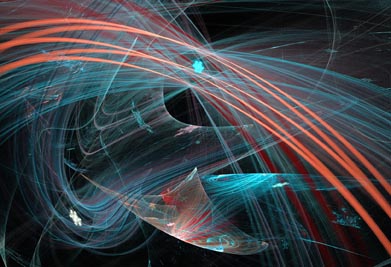Module 7
1. Module 7
Module 7 Introduction

Hemera/Thinkstock
If you have ever enjoyed a movie with entertaining special effects, or admired the contours of an expensive car, or wondered about the symmetry of a work of art, then you have indirectly appreciated the mathematics that made those things possible. Math is not only used to describe how things work, but is the basis of creating wonderful works of art. In this module you will look at how mathematics is used in art and the art world. You will see the works of artists who have created art based on mathematical principles.
What happens when you merge the left brain with the right brain? Math art!
Module 7 will introduce you to absolute value, absolute value functions, and reciprocal functions. You will learn how to find the value of absolute value expressions and the roots of absolute value functions. You will see why sometimes there are extraneous roots when solving absolute value equations. You will graph reciprocal functions and learn how the properties of the reciprocal function are related to the properties of the original function.
In this module you will investigate the following questions:
- How are the properties of absolute value functions and reciprocal functions related to their graphs?
- How can mathematics be used to create art?
To investigate these questions, you will focus on the lessons and questions in the table.
Lesson |
Topic |
Lesson Questions |
1 |
Absolute Value |
How can you determine the absolute value of a mathematical expression? |
| Under what circumstances is the absolute value of an expression used to solve a problem? | ||
2 |
Absolute Value Functions |
How do the properties of y = f(x) compare to those of |
| How can absolute value functions be written in piecewise notation? | ||
3 |
Absolute Value Equations |
How can the roots of absolute value equations be determined? |
| Why are extraneous roots sometimes obtained when absolute value equations are solved algebraically? | ||
4 |
Reciprocal Functions |
How are the properties of reciprocals related to the properties of reciprocal functions? |
| What are the strategies for graphing the reciprocal of a function? |
There are many ways to use mathematical principles to create an image. For example, the coordinate grid is often used as the starting point for generating a sketch composed of line segments. You can also use the equations of known functions to create curves with specific contours. Another way to generate math-based art is to apply principles of symmetry and perspective.
Regardless of the method you use, creating works of art based on mathematics can be a fun endeavor. In the Module 7 Project, you will create an original work of art based on the functions that you will explore in the module, as well as others you have encountered in the course. You will be amazed at what you can produce!